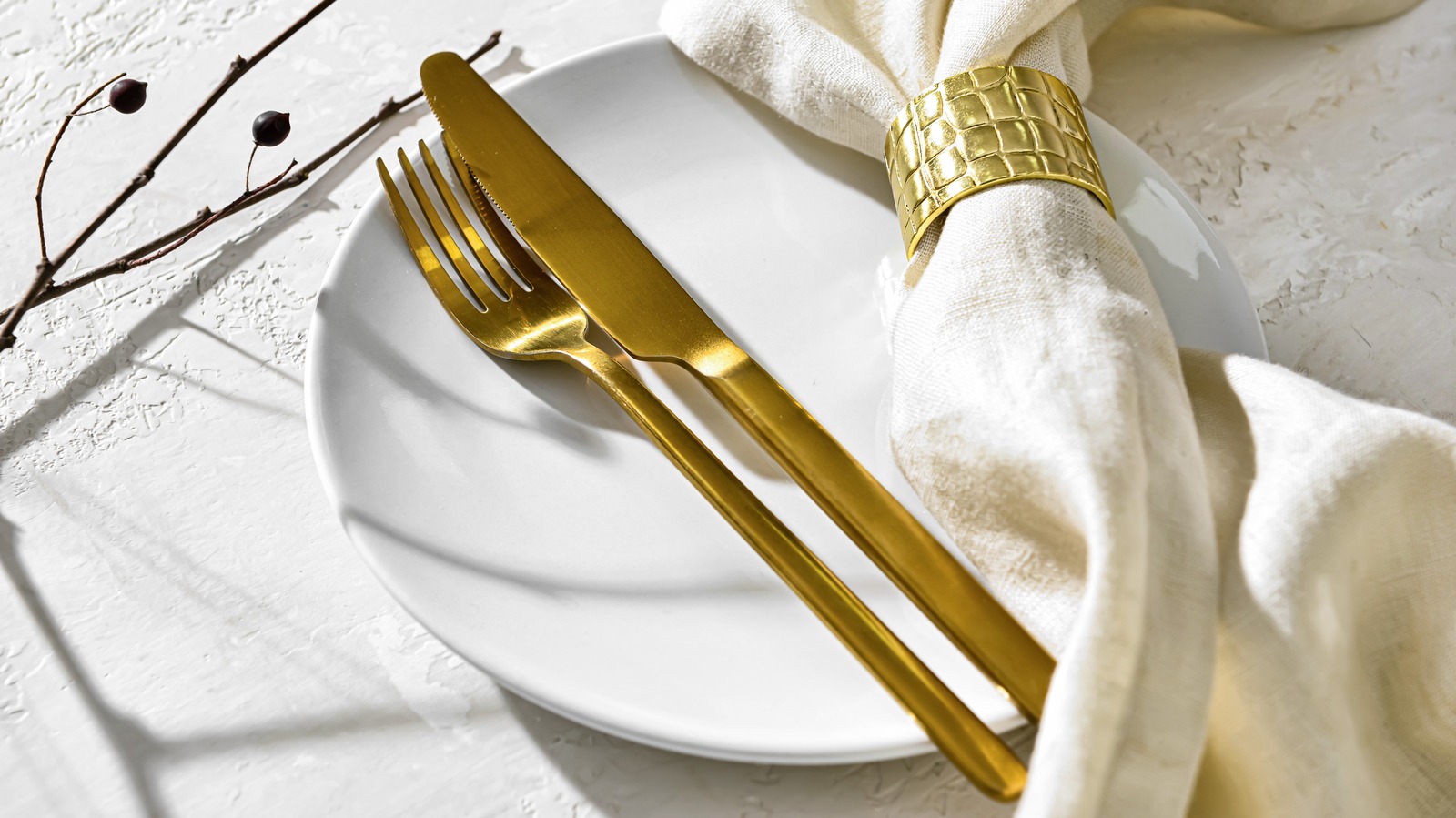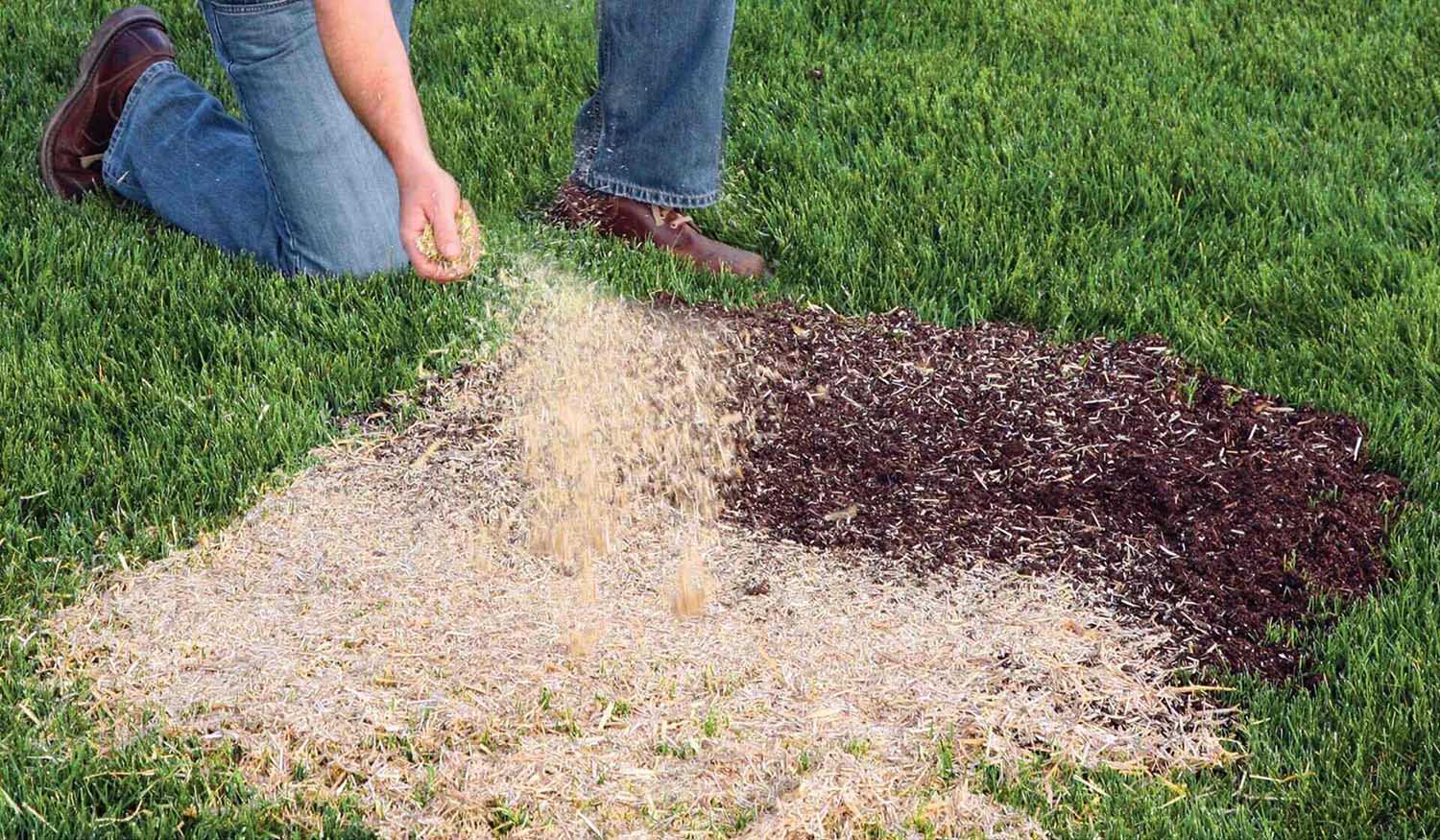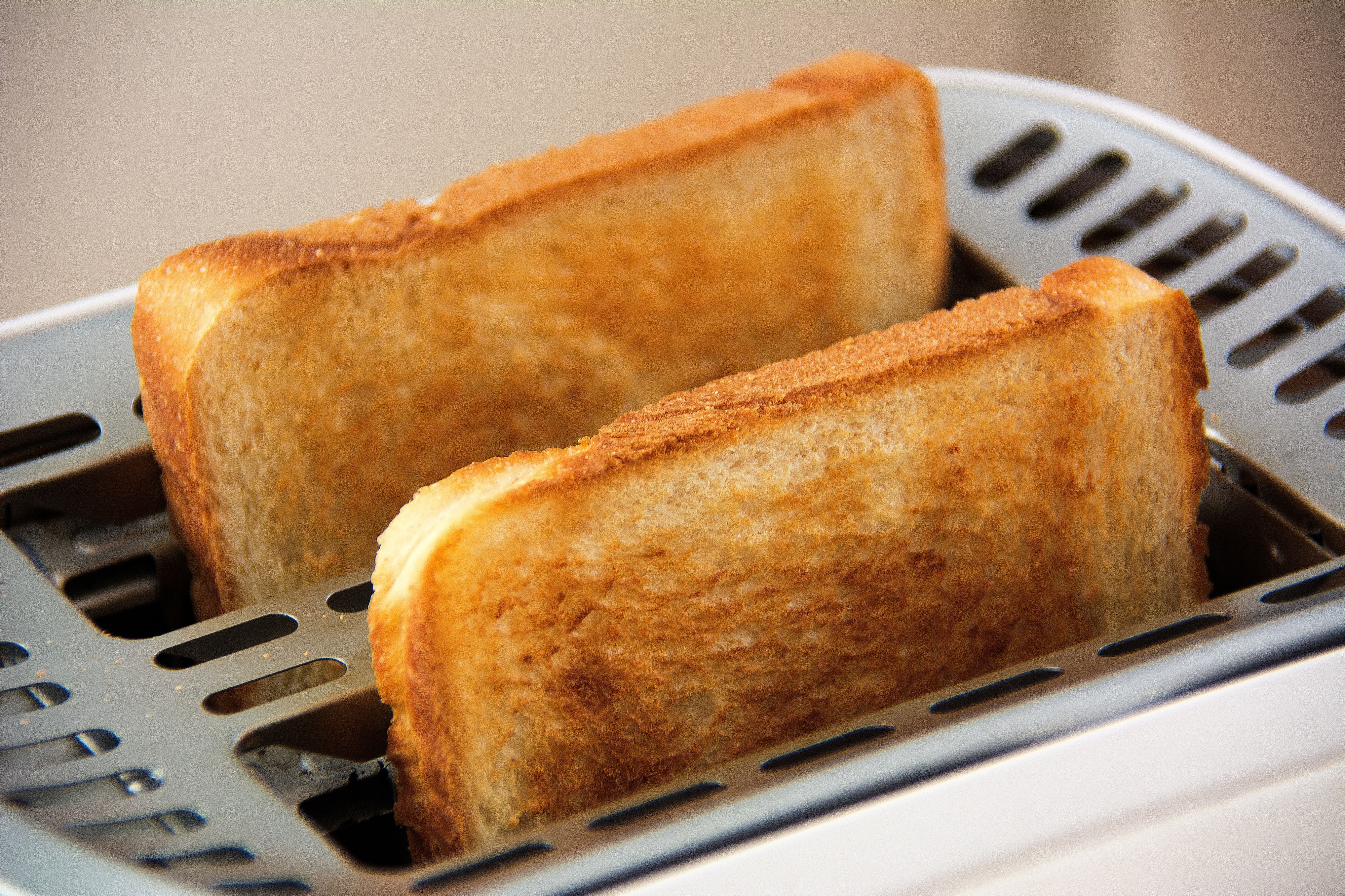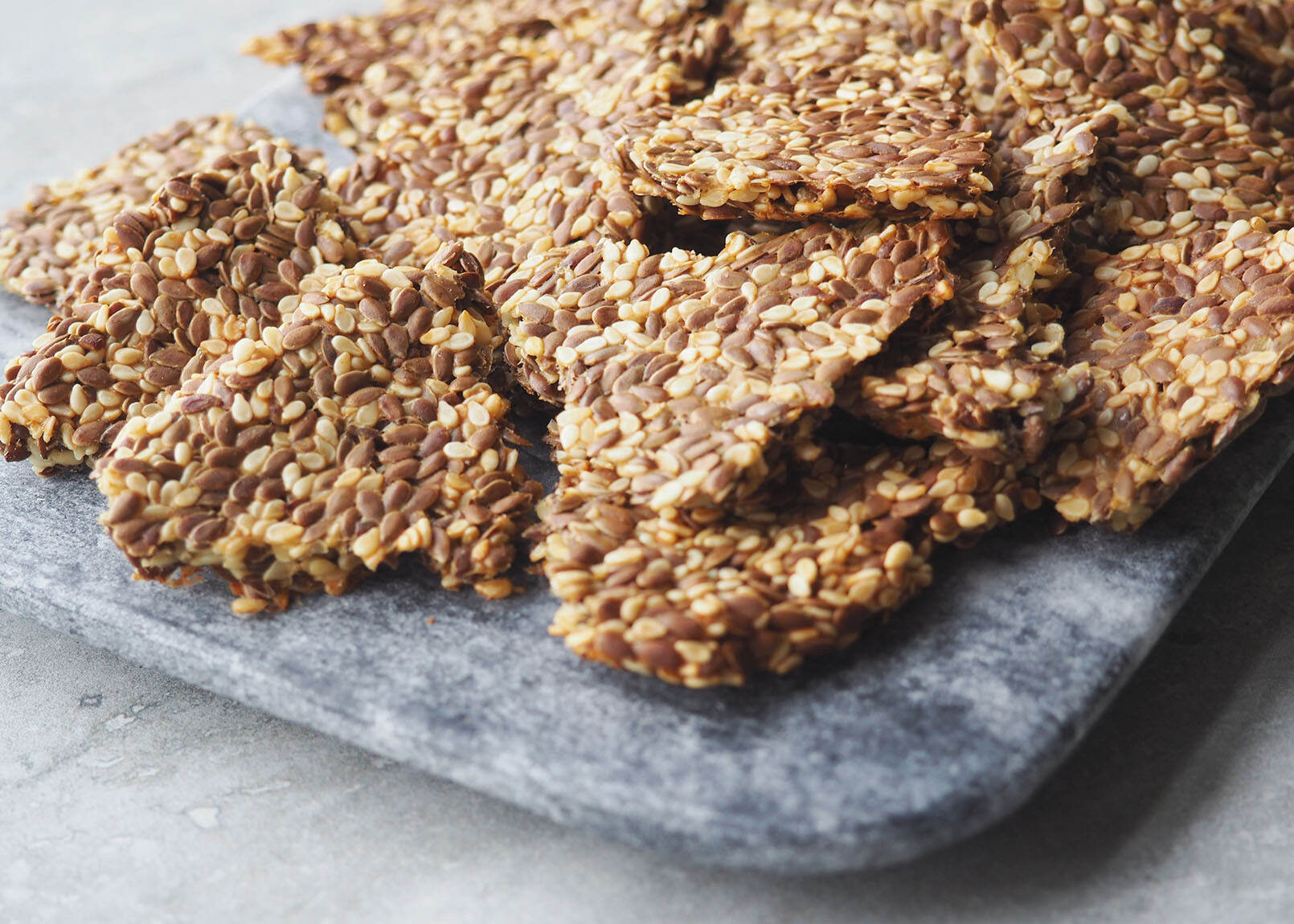

Tableware
Why Do You Put Salt On A Napkin
Modified: January 9, 2024
Discover why tableware is incomplete without salt and how it enhances the dining experience. Explore the importance of placing salt on a napkin and its culinary significance.
(Many of the links in this article redirect to a specific reviewed product. Your purchase of these products through affiliate links helps to generate commission for Storables.com, at no extra cost. Learn more)
Introduction
When sitting down at a restaurant or dining table, you might have noticed a small dish or pile of salt on the napkin next to your plate. Have you ever wondered why that salt is there? What is its purpose? In this article, we will explore the intriguing practice of putting salt on a napkin and shed some light on its historical, cultural, and scientific significance.
Throughout history, salt has held a special place in human civilization. It has been highly valued for its ability to preserve food, enhance flavor, and even as a form of currency. Napkins, on the other hand, have been essential in dining etiquette, serving as a practical tool for cleanliness and presentation at the table.
So why do we combine these two seemingly unrelated elements by placing salt on a napkin? The answer lies in a combination of tradition, functionality, and cultural symbolism, which we will delve into in the following sections.
Key Takeaways:
- Placing salt on napkins is a cultural and practical tradition that symbolizes hospitality, enhances flavor, and maintains cleanliness, adding charm and sophistication to the dining experience.
- The practice of salt on napkins reflects historical, cultural, and scientific significance, serving as a symbol of tradition, attention to detail, and customization in dining etiquette.
Read more: How To Put Napkins In A Napkin Holder
Historical Background of Salt Usage
Salt has been an integral part of human history for thousands of years. It was highly valued in ancient civilizations such as Egypt, Greece, and Rome, where it was used not only as a seasoning but also as a means of food preservation. In fact, the word “salary” derives from the Latin word “sal,” which means salt, indicating that salt was once considered as valuable as money.
The importance of salt in human diet and economy led to the development of salt routes and the establishment of salt mines and salt pans. These routes enabled the trade and distribution of salt across regions, providing access to this precious commodity.
Moreover, salt played a role in religious ceremonies and rituals in various cultures. It was used as a symbol of purity, protection, and fertility. In some cultures, salt was even believed to have mystical powers and was used in spiritual cleansing rituals.
The discovery of salt’s ability to preserve food revolutionized human civilization. Before refrigeration, salt was the primary method of preventing spoilage and extending the shelf life of perishable items. This was especially crucial for societies reliant on agriculture and hunting, as it allowed them to store surplus food for times of scarcity.
Considering its historical significance, it is no surprise that salt found its way onto dining tables, in various forms and placements. The practice of putting salt on a napkin is a continuation of this enduring tradition, adding both aesthetic and practical elements to the dining experience.
The Function of Napkins in Dining
Napkins have been a staple of tableware for centuries, serving both functional and cultural purposes in dining. Originally, napkins were used solely for hygiene, as guests could use them to wipe their hands and faces during the meal. As dining etiquette evolved, so did the role of napkins.
Today, napkins serve multiple functions in a dining setting:
- Hygiene: Napkins continue to play a crucial role in maintaining cleanliness during meals. They are used to wipe hands, mouths, and fingers, ensuring that diners can enjoy their food without worrying about accidental spills or stains on their clothing.
- Table Presentation: Napkins contribute to the overall aesthetics of the table setting. They can be folded into various creative shapes or placed in elegant holders, enhancing the visual appeal of the dining experience.
- Elegance and sophistication: A well-placed napkin adds a touch of elegance to a dining occasion. It is considered a refined gesture to unfold and place a napkin on one’s lap before the meal begins, signaling respect for the dining experience.
- Etiquette and manners: Proper napkin etiquette is an essential aspect of dining culture. Knowing how to use a napkin correctly demonstrates good manners and respect for the host or hostess. For example, it is customary to place the napkin neatly on the lap during the meal and to fold it loosely and place it to the left of the plate when finished.
By understanding the various functions of napkins, it becomes apparent that they are not merely decorative items but practical tools that enhance the dining experience and contribute to a sense of refinement and etiquette.
The Purpose of Salt on Napkins
Now that we have established the historical background of salt and the function of napkins in dining, let’s explore the purpose of placing salt on napkins. While the specific reasons may vary across different cultures and settings, there are several common explanations for this practice.
- Preserving cleanliness: One purpose of placing salt on napkins is to help keep the napkin clean and prevent it from sticking to damp or sticky surfaces. Salt acts as an absorbent and can help absorb any moisture or food residue that may come in contact with the napkin, making it easier to clean if necessary.
- Enhancing flavor: Salt is a universal seasoning that enhances the taste of food. Placing salt on a napkin allows diners to have easy access to it during the meal. They can sprinkle a little salt on their food or dip their fingers into the salt to add seasoning according to their preference.
- Symbol of hospitality: In some cultures, placing salt on a napkin is a symbolic gesture of hospitality. It represents the host’s desire to ensure that the guests’ dining experience is enjoyable and satisfying. It is a way of inviting guests to season their food to their liking and make themselves feel at home.
It is worth noting that the practice of placing salt on napkins is not universally followed in all dining settings. It is more commonly found in formal or fine dining establishments where attention to detail and tradition play an important role.
Ultimately, the purpose of salt on napkins serves a combination of functional and cultural elements. It aids in maintaining cleanliness, adds flavor to the meal, and signifies the host’s hospitality and attention to the guests’ satisfaction.
When you put salt on a napkin, it can help absorb any moisture and prevent the napkin from sticking to your glass. This is especially useful when serving drinks with condensation.
Cultural Significance of Salt on Napkins
The practice of placing salt on napkins carries cultural significance in various regions and culinary traditions. Let’s explore a few examples:
- Middle Eastern and Mediterranean cultures: In Middle Eastern and Mediterranean countries, such as Turkey and Greece, placing salt on a napkin is a customary practice. It symbolizes hospitality and a warm welcome to guests. It is believed to date back to ancient times when salt was a valuable commodity and offering it to guests demonstrated the host’s generosity.
- Japanese tea ceremonies: In Japanese tea ceremonies, where meticulous attention to detail is paramount, a small pile of salt may be placed on the napkin to cleanse the palate. The salt is used to dip the fingers into, removing any residual flavors before enjoying the traditional tea. This practice is rooted in the Japanese concept of purity and mindfulness.
- Western fine dining: In fine dining settings in Western cultures, you may find a small dish or container of salt delicately placed on the napkin. This is often seen in upscale restaurants or during formal occasions. It serves both as a practical offering for seasoning the food and as a symbol of the restaurant’s commitment to culinary excellence and attention to detail.
The cultural significance of salt on napkins highlights the reverence for traditions, the value placed on hospitality, and the appreciation for enhancing the dining experience. It reflects how the act of sharing a meal goes beyond mere sustenance and becomes an opportunity to honor guests and showcase cultural expressions of hospitality.
Read more: Why Do You Put Straw On Grass Seed
Scientific Explanations for Salt on Napkins
While the cultural significance of placing salt on napkins provides valuable insights, there are also scientific explanations behind this practice. Let’s explore a few scientific reasons for this tradition:
- Moisture absorption: Salt has strong hygroscopic properties, meaning it has the ability to absorb moisture from the surrounding environment. By placing salt on a napkin, it can help absorb any moisture or condensation that might accumulate on the napkin during the meal. This helps to keep the napkin dry and prevent it from sticking to surfaces.
- Odor neutralization: In some cases, salt on a napkin may help neutralize unwanted odors. For example, if the napkin comes in contact with foods such as seafood or pungent spices, the salt can help absorb and mask any lingering odors, providing a more pleasant dining experience.
- Grease absorption: Salt can also assist in absorbing grease or oil from the hands or food items. It acts as a natural absorbent that helps to minimize the greasy residue left behind on the napkin, keeping it cleaner and more presentable.
These scientific explanations align with the practical aspects of the practice, ensuring that the dining experience is enjoyable and hygienic. By using salt on the napkin, it helps to maintain the cleanliness of the napkin and enhance overall dining satisfaction.
Salt on Napkins as a Table Etiquette Practice
The practice of placing salt on napkins also has roots in table etiquette, adding to the overall sophistication and elegance of the dining experience. Here are a few key points regarding salt on napkins as a table etiquette practice:
- Pre-meal ritual: In formal dining settings, the placement of salt on a napkin is often done before the guests are seated. It is seen as a pre-meal ritual, signaling the beginning of the dining experience. Placing salt on the napkin demonstrates the attention to detail and care taken to ensure guests’ satisfaction.
- Seasoning freedom: By providing salt on the napkin, the host invites guests to take control of their seasoning preferences. It is a way of acknowledging that taste is subjective and allowing guests the freedom to enhance their dishes according to their personal preference. This gesture highlights the importance of individual enjoyment during the meal.
- Indirect communication: Placing salt on the napkin can also serve as a form of non-verbal communication between the host and the guests. It indicates that the host has taken care to consider the guests’ needs and desires, allowing them to customize their dining experience. It is a subtle way of ensuring that each guest can find their perfect balance of flavors.
- Attention to detail: The presence of salt on the napkin demonstrates the host’s commitment to a well-curated dining experience. It portrays an image of sophistication, refinement, and attention to even the smallest details. This attention to detail enhances the overall ambiance and elevates the guest’s perception of the occasion.
In summary, the practice of placing salt on napkins aligns with the principles of table etiquette, fostering a sense of consideration, customization, and refinement. It serves as a visual representation of the host’s commitment to ensuring a memorable and enjoyable dining experience for their guests.
Conclusion
The practice of placing salt on napkins is a fascinating tradition with a rich history, cultural significance, and practical reasoning. Throughout the centuries, salt has played a crucial role in human civilization, serving as a valuable commodity, a means of food preservation, and a symbol of hospitality. Napkins, on the other hand, have evolved from simple tools of hygiene to symbols of elegance and refinement in the world of dining.
The purpose of salt on napkins extends beyond its functional uses. It represents a fusion of tradition, functionality, and cultural symbolism. Placing salt on a napkin helps to preserve its cleanliness, enhances the dining experience with additional flavoring options, and symbolizes the host’s hospitality and attention to their guests’ satisfaction.
This cultural practice varies across different regions and culinary traditions, highlighting the diversity of dining customs around the world. From the Middle East to Japan, and Western fine dining establishments, the presence of salt on a napkin carries unique meanings and reflects each culture’s reverence for tradition and hospitality.
Scientifically, salt on napkins serves practical purposes such as moisture absorption, odor neutralization, and grease absorption. These scientific explanations align with the practical aspects of maintaining a hygienic and pleasant dining experience.
Furthermore, the practice of placing salt on napkins is deeply rooted in table etiquette. It signifies attention to detail, encourages seasoning freedom, and communicates subtly with guests, ensuring that their preferences are met and that they feel welcomed and cared for.
In conclusion, the practice of placing salt on napkins is a multifaceted tradition that combines elements of history, culture, practicality, and etiquette. It adds charm, sophistication, and customization to the dining experience, creating a memorable and enjoyable atmosphere for both hosts and guests.
Frequently Asked Questions about Why Do You Put Salt On A Napkin
Was this page helpful?
At Storables.com, we guarantee accurate and reliable information. Our content, validated by Expert Board Contributors, is crafted following stringent Editorial Policies. We're committed to providing you with well-researched, expert-backed insights for all your informational needs.















0 thoughts on “Why Do You Put Salt On A Napkin”